 When Sean and I first decided on a general destination for our honeymoon, we had looked at Thailand and Vietnam. Once I found the Intrepid Travel website, I was torn between an entire tour in Vietnam or a tour through Southern Thailand that ended in Singapore. Somewhere along the way, Cambodia and Angkor Wat entered into my research. The more I read about this place, the stronger I felt that I couldn’t be so close to this mysterious and amazing world history and heritage sight without seeing it.
When Sean and I first decided on a general destination for our honeymoon, we had looked at Thailand and Vietnam. Once I found the Intrepid Travel website, I was torn between an entire tour in Vietnam or a tour through Southern Thailand that ended in Singapore. Somewhere along the way, Cambodia and Angkor Wat entered into my research. The more I read about this place, the stronger I felt that I couldn’t be so close to this mysterious and amazing world history and heritage sight without seeing it.
The ancient temple city was a huge focus of our tour and Dyka was an amazing guide. Not only was he incredibly knowledgeable about the history of this mysterious place, but he also knew all the best little spots for great photos – and often got us there before the crowds came. We were loving all the shots with no people in them!
We spent all day on Tuesday, December 22 exploring the Angkor temples. The archaeological site contains the remains of the different capitals of the Khmer Empire, from the 9th to the 15th century. Angkor Wat is the best-preserved of the temples and was first built as a Hindu one, then was later turned into a Buddhist temple. It was constructed in the 12th century and took over 30 years to complete. Angkor Wat means “Temple City” translated in Khmer and it was our first stop. There is a huge moat all around the temple grounds, and two reflecting pools within the complex.
We began at the back entrance.
The detail in the carvings along the walls and on statues was incredible.
To get to this view, we had to climb a VERY steep staircase – although I’m thankful they were at least regular stairs. Climbing the original temple stones would have been treacherous. Sean and I were both in disbelief about how freely people were allowed to move through these temples. There weren’t many walkways or other constructs to guide people through and keep wear and tear to a minimum. Makes me wonder how Cambodia will be able to sustain this place as the tourists keep pouring in. It was amazing to experience it this way, though – never would’ve happened like that in the USA!
The picture below doesn’t even come close to how stunning the view was from the tower of Angkor Wat. The vastness of the complex and the dense, green jungle beyond was a breathtaking sight.

Dyka took us to one of the modern temples to hear the monks chanting at lunch. They began eating immediately afterward, and we learned it was their last meal until sunrise the next day. It was interesting to learn a bit about these monks, as they devote their time to “learning” and can leave once they are adults. They also don’t cook their own meals – an older woman was serving these boys. 

One of the reflecting pools at the front of Angkor Wat.
We passed along this bridge and over the huge moat then through the gate behind it on our way to the Bayon Temple.
Before heading in to Bayon Temple, Sean and Mark tried their skill at lifting and moving the stones in the same way the workers had centuries before. 
Bayon Temple is also known as Temple of the Four Faces, as each tower has a face on each side. There are also intricate carvings along the wall at the front of the temple that tell of mythological, historical and mundane scenes.
We explored this temple away from the group and noticed that, while not completely falling apart, it wasn’t as well-preserved as Angkor Wat. It definitely had a creep-factor though with the faces peering at us from every angle.

After this temple, we went for lunch as a group and many people had the traditional Khmer dish, Amok Fish. Sean ordered it – fish in a rich coconut curry broth with vegetables, served in a coconut. It was very good! I had a pork-ginger stir fry that was also really tasty. That was one of the best lunches of the trip. We also enjoyed the best Cambodian peanuts of the trip – these were not just any peanuts. They were roasted and tossed with dried lemongrass, ginger, garlic and chilies. SO good!
Our final temple of the day was a 30-minute drive away and the one I was most excited to see, as I’d read many good things. Banteay Srey was built in the 10th century and officially means “citadel of the women” but Dyka said it’s called “women’s temple.” It was built with red sandstone, so everything had a beautiful red/orange hue that was even more pronounced by the early evening sun. The softer make-up of the sandstone also lent itself to intricate and beautiful carvings – by far the most detailed we’d seen. It was an absolutely spectacular sight and I feel so lucky to have been able to explore it!
Our group at Banteay Srei. Sarah is the photographer, and Dyka – our guide – is on the far left in the ball cap. A great bunch of people!
We returned to Siem Reap (you can read more about our time in the city here) and had an early night after dinner because we had to be on the bus at 5.15 the next morning to watch the sun rise over Angkor Wat. Yes, it was worth it. 🙂
Dyka took us to one of the temple buildings that had been a library and Sean and I sat up on a ledge with Stephanie and Richard, our travel companions from the UK. We had a wonderful time watching the colors in the sky change from orange and red, to gold and soft pink, and finally to yellow and blue as the sun came up for the day.



Since it was only 6.30am when we left Angkor Wat, we headed over to another popular temple to beat the crowds. This one may look familiar to many, as it was featured in the movie “Tomb Raider.” It’s famous for the large trees and root systems crawling and sprawling over the temple walls and throughout the complex.
Indeed, it feels like the jungle is slowly but surely taking over Ta Prohm. We couldn’t get enough of this place – even though renovations and preservations are happening all over the temple grounds, there were so many spots that remained untouched. This temple was constructed in about 5 years – compared to over 30 for Angkor Wat and Dyka explained that this quick and poor construction is why many of the structure just couldn’t stand the test of time.
In addition to the stunning scenes of the jungle climbing over the temple, there were piles of stones and blocks everywhere, often filling small hallways and openings. We stayed here a long while and I will never forget the experience.





I’m so thankful we were able to see Angkor, Cambodia. The country is in such a fragile state, as I’ll describe in more detail in later posts, and it’s difficult for anyone to really say what will happen here in the coming decades. We hope it’s peace and that more people will be able to come and see these historic sites of the famed Khmer empire.










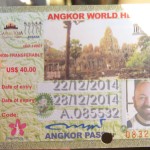
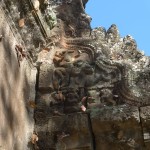
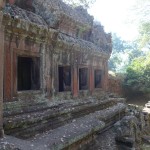
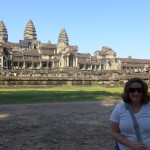
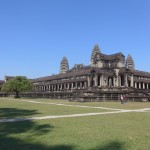
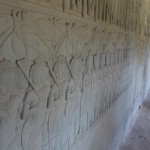
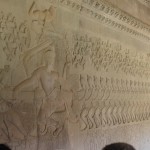

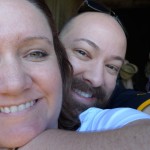

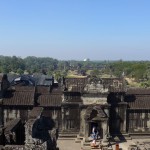
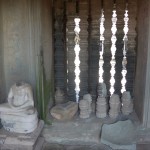
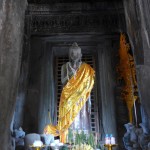

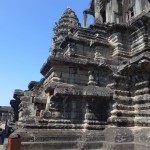
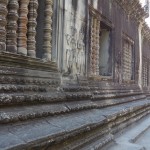
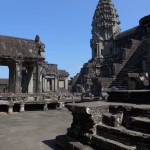
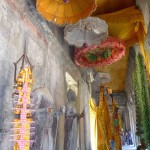
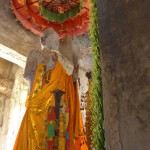

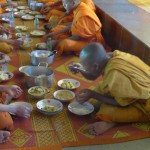
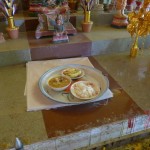
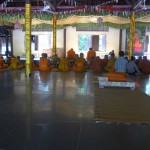
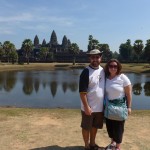
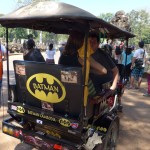

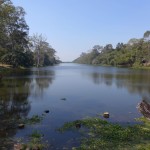
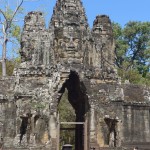
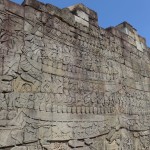

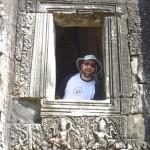
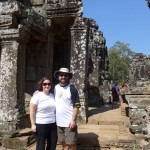
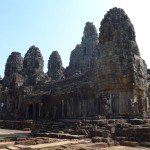
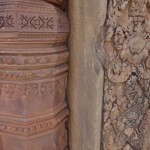
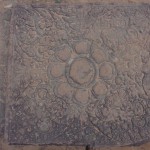
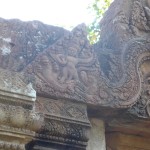
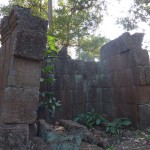
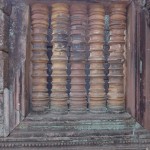
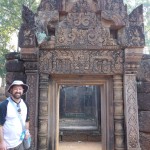
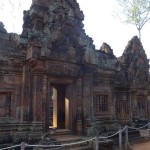
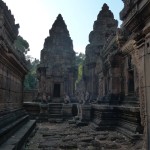
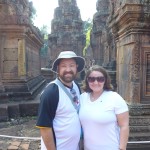
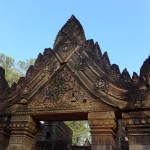
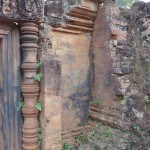
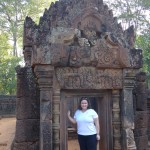

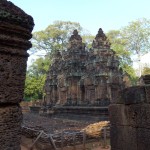
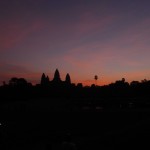
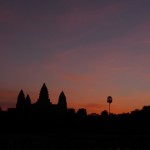
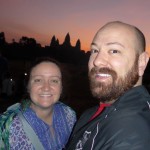
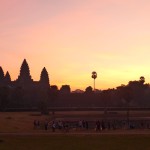
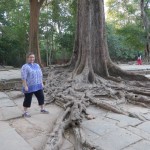
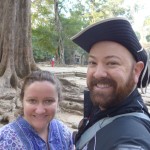
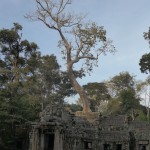

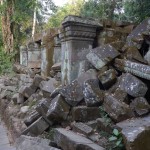
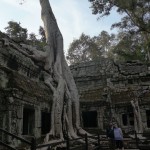
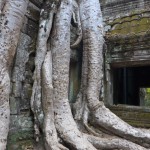
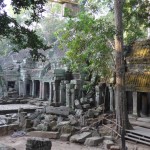
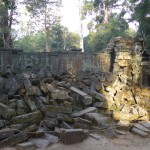
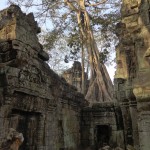
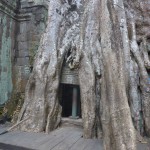
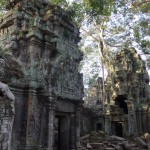

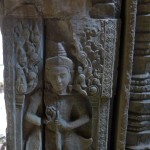
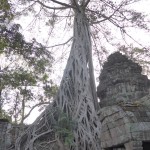


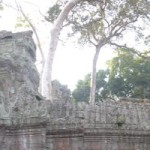

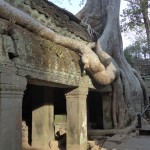
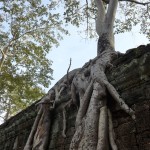
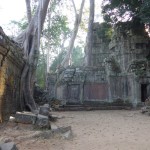
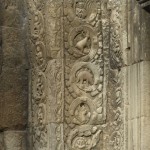
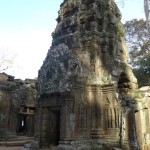
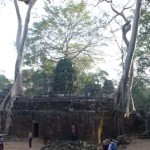
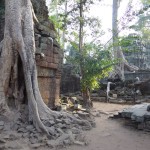

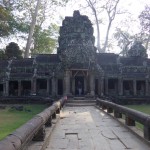
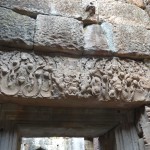
So glad y’all were able to take this amazing journey together! All the pictures are great, but I think the Angkor Wat pics are my favorite!
Thank you, Katy! It was an incredible trip for us, so glad you loved the pics. Angkor Wat was my favorite thing we saw, for sure.